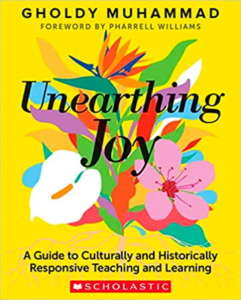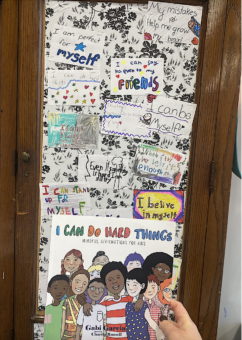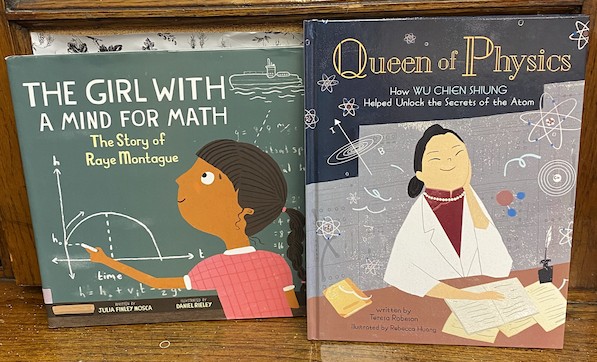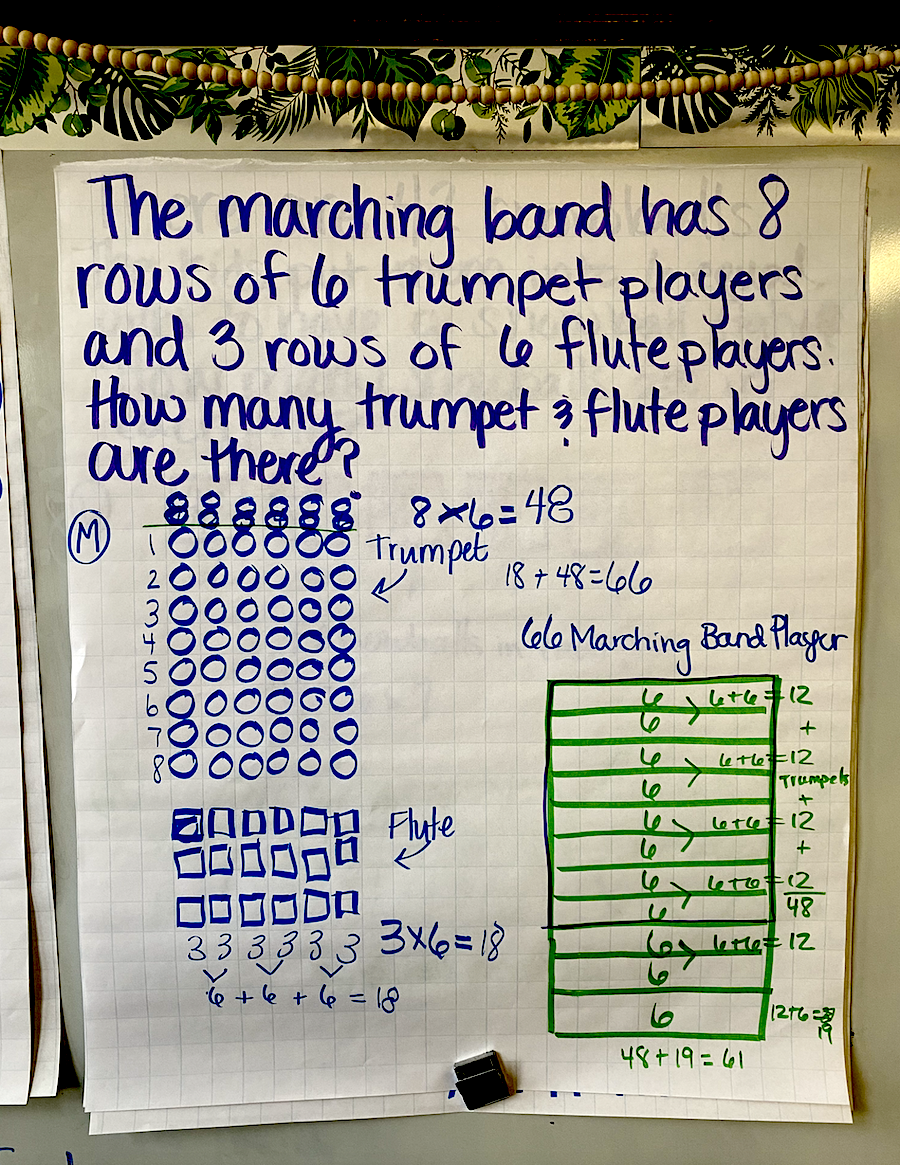5 Ideas to Add Comfort and Joy to Math Class
By Mona Iehl
 December can be an overwhelming month in the classroom. The time between Thanksgiving break and winter break brings many challenges.
December can be an overwhelming month in the classroom. The time between Thanksgiving break and winter break brings many challenges.
The challenges include keeping everyone engaged, staying on track with learning, and not getting side-tracked in our curriculum with all of the fun… while also still having fun and celebrating that we’ve made it almost half way through the year together!

Dr. Muhammad shared 10 lessons of joy from historical examples, including these five:
● Joy is connected to self-determination and self-empowerment.
● Joy is when we cultivate the mind and heart together.
● Joy is when we center love, music, and art.
● Joy is connected to justice and criticality.
● Joy is enacted when youth voices and truths are centered and shared.
Muhammad encouraged the teachers listening to consider how we can integrate joy into our daily lessons and classrooms. She gave examples of how our curriculum and learning could be infused with joy and demonstrated how that joy could fuel culturally responsive teaching and learning.
This inspirational talk got me thinking about how teaching in December could really use more joy. So, with Dr. Muhammad’s lessons of joy in mind, here are 5 things you can do to bring joy to teaching in December (and throughout the school year) while also keeping things calm and consistent.
Joy is connected to self-determination & self-empowerment.
Read Alouds
The stories we share with our students can help students be empowered. I like to infuse joy into our days during December by reading biographies. Specifically, I like reading stories that can serve as windows and mirrors for students. This means that students can see themselves in literature while also seeing experiences they might not yet know of in their day-to-day life.
Some math related biographies I find particularly inspiring are Queen of Physics: How Wu Chien Shiung Helped Unlock the Secrets of the Atom by Teresa Robeson (illustrated by Rebecca Huang) and The Girl With a Mind for Math: The Story of Raye Montague by Julia Finley Mosca (illustrated by Daniel Rieley).
These life stories can help our students recognize their own self-determination. I suggest using questions and turn and talks to engage students to reflect on their connections to these stories and the lessons they can learn.
Joy is when we cultivate the mind and heart together.
Revisit Mindset
Typically in the beginning of the year we spend a lot of time building our classroom community and establishing the language for the mindsets students will need in our math community. However, by December we’re usually cruising along in our curriculum and oftentimes we forget to pause to revisit our mindsets.
When we teachers slow down to encourage students to share their heart and mind in the classroom, we build community and joy.

Your class could come up with an affirmation station or chant to say at the start of each day to begin the class with joy!
Joy is when we center love, music, and art.
Music in Math
Music is an instant engagement boost in my math classroom. I like to use songs to help students memorize the multiples of numbers. One way I challenge my students to add joy to math concepts is to make up a song to explain them.
For example, the associative property of multiplication is sometimes very confusing to students. However, when I gave them the task to make up substitute lyrics about it using their favorite song, they were highly motivated. The results were a lot of laughing and joyful sharing of math ideas along with memorable lessons of the associative property!
Joy is connected to justice and criticality.
Make a plan for the new year
A plan for the new year is crucial in order for teachers to enjoy their break and set a positive tone for the new year. I like to take time to pause and consider if others are being taken care of and getting what they need inside our classroom community.
I spend time in December doing a needs assessment with my students and taking stock of where we’ve come from and where we’re going. You can do this simply by asking students to reflect on these questions:
- What do you need?
- What do others in our community need?
- What can we give?
Then have students work together in small groups to reflect on the ideas shared and come up with some action steps. I like to frame the action steps as what should we “Start – Stop – Continue.” Each group comes up with one or two things we should start doing as a class, stop doing, and continue doing. This allows for students to speak up about what is most important to them and ensure that their community members are taken care of.
You’ll notice students love this activity because they feel like they have a part in forming the direction of the community. When students are a part of building and re-building, they are more invested with a greater sense of belonging.
Joy is enacted when youth voices and truths are centered and shared.
Let them talk (with a purpose)
Giving our students time to talk about their math thinking is critical for students to feel connected to our classroom community. When students believe that their ideas are valued, they are more motivated to engage in the work.
A simple way to start this (and continue it year round) is to have students share how they solved a problem and for the teacher to simply scribe their steps as they describe them. Ask for 2 or 3 different ways to solve a problem. Once the strategies are shared, ask students to compare and contrast them in a discussion with their partner or trio. End with a whole group conversation to share ideas.
You’ll not only notice a greater sense of joy in their math conversations, but you’ll notice everyone is talking. When we take away the pressure to get the right answer and focus on the process, students are more engaged and motivated to participate.
Ending the Year Joyfully Together…
Teacher friends, I wish you joy and peace as you end this calendar year with your students. Through thoughtfully infusing joy into our students’ days, we can cultivate a classroom community that is both culturally responsive and engaging for our students.
As you plan your joyful additions this winter (and into spring!), I hope you’ll consider sharing your ideas with your school community or those of us here in your online teacher community by leaving a comment below so we can make this article a treasure trove of joyful ideas.
Mona Iehl (@HelloMonaMath) is a fifth- and sixth-grade math teacher in Chicago, Illinois. Mona started her 14-year year teaching career in the primary grades but found her home in the middle grades six years ago. For more details about her teaching methods, visit her website and see her other MiddleWeb posts here. Mona recently took her passion for helping teachers and students find their inner mathematician to a podcast. Listen in at @HonestMathChat.

































Thanks so much for including QUEEN OF PHYSICS in your post about incorporating joy in teaching! That was something I tried to convey when writing about Dr. Wu’s life – her sense of joy and delight in science and research. Learning should be joyous!